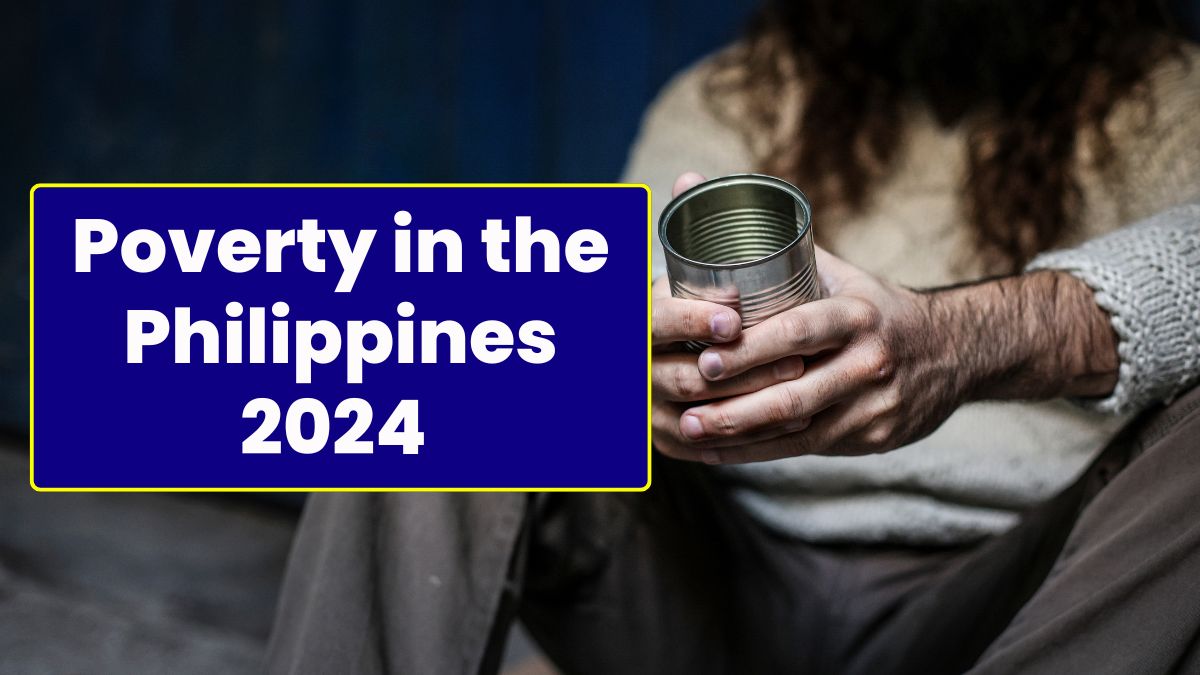Poverty in the Philippines 2024 – Throughout this article, you’ll find out about what the current poverty statistics are in the Philippines in 2024: Poverty in the Philippines 2024: Current poverty statistics in the Philippines? In the first half of 2023, the Federal Government statistics agency reported a poverty rate of 23.7 percent, despite the Philippines’ poverty rate dropping to 22.4$ per million people. The Philippines is bracing for the impact of poverty in 2024 due to weather phenomena, as well as rapid inflation rates. Continue reading for more information about Poverty in the Philippines in 2024, current stats, and more.
Poverty in the Philippines 2024
Economic growth continues to boom and bust cycle with some recent changes in the moderate economic expansion that had been impacted by poverty. The rising population, which has been considered a major factor in poverty, also unmanages poverty across income brackets, sectors, and regions. Poverty in the Philippines 2024
There are certain factors that have contributed to the rise in Filipino poverty that are considered to be responsible for it. Over the past 40 years, there has been a low to moderate growth in the economy that has been elastic to poverty reduction, as well as a weakness in employment generation that has resulted in a failure to develop jobs that are of the right quality for each factor.
The rising inflation with the economic crisis period and levels of high and constant levels of inequality based on their income and assets have been exhausting with positive impacts on the economic expansion. According to federal analysts, the Philippines will face major challenges in 2024. The Gross Domestic Product of the country will face these challenges, which will be narrowed from 6.5 to 7.5 dollars to 6.5 to 7.5 dollars from 6.5 to 8 dollars.
Around 18.1% of the Filipino population lives below the national poverty line, which is equal to 2.2% of the employed population living below $1.90 per day power parity. According to the Philippine Poverty Index in 2021, 18.1% of the population lives below the national poverty line. Under the mortality rate, 26, per 1000 live births were reported. Also, 2.2% of employed people lived on less than $1.90 per day PPP.
The new year 2024, is contemporary with the new beginnings that have been figured with the past faced with challenges that are facing at the future. People living in poverty represent those who have been considered to have a traditional look back and engage in a fresh start in the Philippines. Based on the latest federal Social Weather Station survey, life has improved within the past 12 months.
What are the Current Poverty Stats in the Philippines In 2024?
As of December 2023, poverty in the Philippines stands at 22.4%, still below the 9% target set by Ferdinand R. Marcos for 2028. According to the Federal World Bank, poverty rates will fall from 17.8% in 2021 to 13.3% in 2023 and 10.70 percent in 2024. Through household welfare, the official poverty methodology in the Philippines measures poverty rates using pretax income.
A person in poverty lacks sufficient income to meet basic needs including shelter, food, clothing, and other necessities. With the ongoing conflicts, poverty is a wide term that elicits a large number of new government policies. In addition to the increase in poverty, the Philippines’ economy has shown a strong recovery with COVID-19 and GDP growth of 5.9% in the third quarter of 2023.
Increasing inflation is also leading to poverty, which is the result of reforms aimed at accelerating economic growth with ramped up efforts to combat it. To mitigate inflation’s adverse effects, low and moderate-income households are also helped by targeted programs, allowances, and the federal living savings program. There are some critical measures taken by the federal government to control poverty.
Philippine poverty was targeted at 6.5 – 7.5% in January 2024, which accounted for its dry impact on the economy.
Poverty in the Philippines 2024 Conclusion
Poverty in the Philippines 2024 – In 2024, poverty in the Philippines remains a significant issue despite some progress. The poverty rate has decreased to 22.4% by the end of 2023, with ambitious targets set by the government aiming for a 9% poverty rate by 2028. Key factors contributing to poverty include persistent economic fluctuations, rising inflation, and rapid population growth. However, there are signs of improvement, with projections indicating a further decrease in poverty to 10.7% by 2024. The government’s targeted programs and economic reforms are critical in mitigating the adverse effects of poverty and supporting low and moderate-income households. As the country continues to navigate these challenges, a focus on economic stability and effective poverty reduction strategies will be essential for achieving long-term progress.









